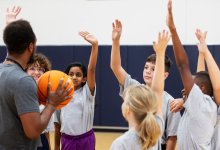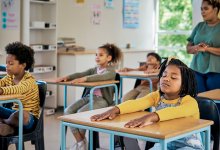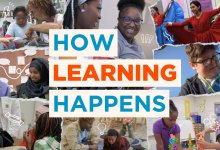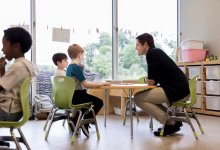Social & Emotional Learning (SEL)
Find resources to help students manage their emotions, resolve conflicts, and make responsible decisions—creating the healthiest school culture possible.
Reinforcing SEL in Physical Education Classes
PE teachers can foster students’ social and emotional learning by using consistent routines and modeling a focus on mindful breathing.171Your content has been saved!
Go to My Saved Content.Manager, Facilitator, Motivator, Advocate: Setting Up Group Roles That Really Work
Designating a meaningful role for each group member helps students reach their potential both individually and collectively.Your content has been saved!
Go to My Saved Content.How Socratic Seminars Can Empower Middle School Students
Opportunities for student-led discussions help students hone their listening, speaking, and critical thinking skills.Your content has been saved!
Go to My Saved Content.How Accessible Tech Can Promote Empathy and Collaboration
A middle school design and technology teacher breaks down a three-project unit that nicely overlaps with STEAM content.Your content has been saved!
Go to My Saved Content.How to Address School Avoidance
To help reduce chronic absenteeism, schools can help students learn how to self-regulate and manage feelings of discomfort.Your content has been saved!
Go to My Saved Content.Using Theater Games to Build Students’ Working Memory
By holding onto the information necessary to play certain games, students develop skills that lead to academic success.Your content has been saved!
Go to My Saved Content.Teaching Young Learners Self-Calming Skills
To help early elementary students manage big emotions, try breathing exercises and sharing how you deal with overpowering feelings.Your content has been saved!
Go to My Saved Content.A Fred Rogers–Inspired Approach to SEL
Elementary teachers can focus on these fundamentals of child development to support social and emotional learning.Why Ages 2-7 Matter So Much for Brain Development
Rich experiences—from play to the arts and relationships—fundamentally shape a young child’s development.124.5kYour content has been saved!
Go to My Saved Content.How Learning Happens
In this series, we explore how educators can guide all students, regardless of their developmental starting points, to become productive and engaged learners.102.2kYour content has been saved!
Go to My Saved Content.Making Students Feel Safe
A trauma-informed approach ensures that students feel safe, supported, and nurtured—to improve their chances of academic success.129.8kYour content has been saved!
Go to My Saved Content.Building Classroom Community Through Daily Dedications
When students share stories about those who have inspired and impacted them, the whole classroom feels more connected.56.8kYour content has been saved!
Go to My Saved Content.When Students Are Traumatized, Teachers Are Too
Trauma in students’ lives takes an emotional and physical toll on teachers as well. Experts weigh in on the best ways to cope.113.3kYour content has been saved!
Go to My Saved Content.A Conflict Resolution Framework for the Early Grades
Teaching students to put aside their differences until they’re feeling calm can help them learn to resolve issues independently.707Your content has been saved!
Go to My Saved Content.8 Proactive Classroom Management Tips
New teachers—and experienced ones too—can find ideas here on how to stop disruptive behavior before it begins.80.3kYour content has been saved!
Go to My Saved Content.












